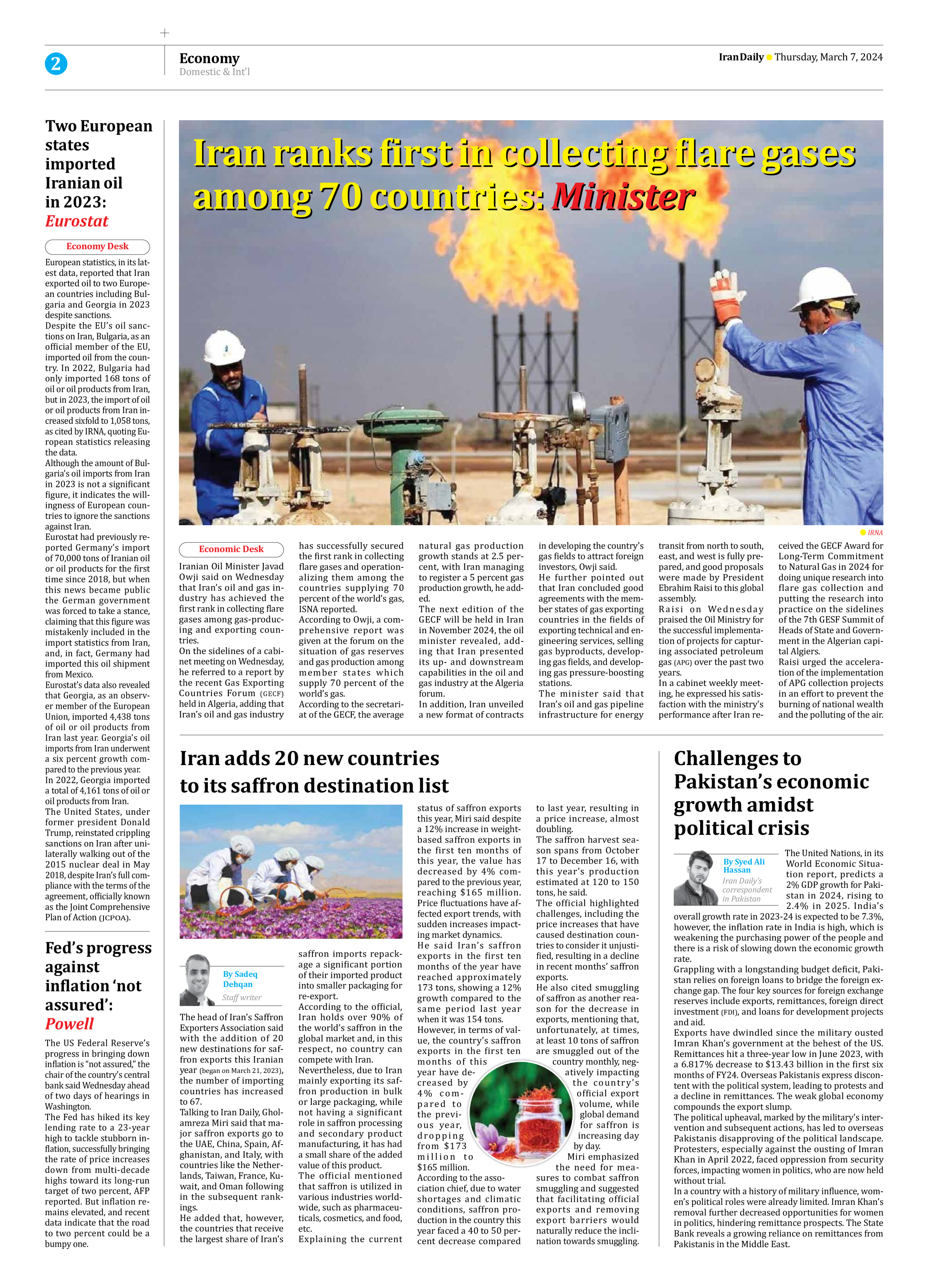
Challenges to Pakistan’s economic growth amidst political crisis
By Syed Ali Hassan
Iran Daily’s correspondent in Pakistan
The United Nations, in its World Economic Situation report, predicts a 2% GDP growth for Pakistan in 2024, rising to 2.4% in 2025. India’s overall growth rate in 2023-24 is expected to be 7.3%, however, the inflation rate in India is high, which is weakening the purchasing power of the people and there is a risk of slowing down the economic growth rate.
Grappling with a longstanding budget deficit, Pakistan relies on foreign loans to bridge the foreign exchange gap. The four key sources for foreign exchange reserves include exports, remittances, foreign direct investment (FDI), and loans for development projects and aid.
Exports have dwindled since the military ousted Imran Khan’s government at the behest of the US. Remittances hit a three-year low in June 2023, with a 6.817% decrease to $13.43 billion in the first six months of FY24. Overseas Pakistanis express discontent with the political system, leading to protests and a decline in remittances. The weak global economy compounds the export slump.
The political upheaval, marked by the military’s intervention and subsequent actions, has led to overseas Pakistanis disapproving of the political landscape. Protesters, especially against the ousting of Imran Khan in April 2022, faced oppression from security forces, impacting women in politics, who are now held without trial.
In a country with a history of military influence, women’s political roles were already limited. Imran Khan’s removal further decreased opportunities for women in politics, hindering remittance prospects. The State Bank reveals a growing reliance on remittances from Pakistanis in the Middle East.







